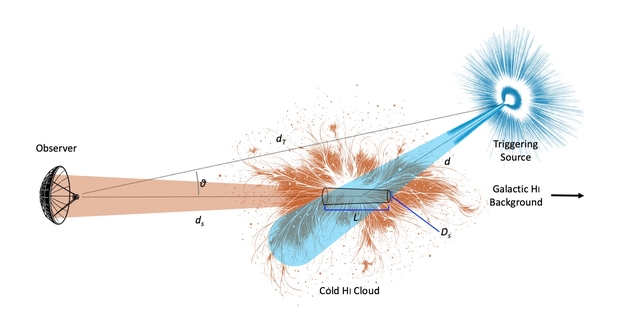http://en.wikipedia.org/wiki/KEO
KEO
From Wikipedia, the free encyclopedia
Jump to: navigation, search
For the Cypriot company see KEO Ltd
KEO is a space time capsule which will be launched in 2010 or 2011[1] carrying messages from the citizens of present Earth to humanity 50,000 years from now, when it will reenter Earth's atmosphere.
The KEO project is supported by UNESCO (who voted it "Project of the 21st century"), Hutchison Whampoa and the European Space Agency, among other institutions. Its name is supposed to represent the three most frequently used sounds common to the most widely spoken languages today, [k], [e] and [o],[2] though this is in fact mistaken, as the most common sound is [a].[3]
Contents
* 1 Personal messages
* 2 Other contents
* 3 Technical aspects
* 4 Project history
* 5 Similar Projects
* 6 See also
* 7 Notes
* 8 References
* 9 External links
[edit] Personal messages
Every person is invited to write a message addressed to the future inhabitants—the deadline is December 31, 2009. Messages can be posted via the the project's website, or sent by postal mail. The organizers encourage everybody to gather messages from children, senior citizens and the illiterate so that every culture and demographic on Earth is represented. The satellite has enough capacity to carry a four-page message from each of the more than six billion inhabitants on the planet. Once the satellite is launched, the messages (with personal names removed) will be made freely available on the web.
[edit] Other contents
KEO will also carry a diamond that encases a drop of human blood chosen at random and samples of air, sea water and earth.[4] The DNA of the human genome will be engraved on one of the faces. The satellite will also carry an astronomical clock that shows the current rotation rates of several pulsars; photographs of people of all cultures; and "the contemporary Library of Alexandria", an encyclopaedic compendium of current human knowledge.
[edit] Technical aspects
The messages and library will be encoded in glass-made radiation-resistant DVDs. Symbolic instructions in several formats will show the future finders how to build a DVD reader.
The satellite itself is a hollow sphere 80 cm in diameter. The sphere is engraved with a map of Earth and surrounded by an aluminium layer, a thermal layer and several layers of titanium and other heavy materials intertwined with vacuum. The sphere is resistant to cosmic radiation, atmosphere re-entry, space junk impacts and so on. For its first few years in orbit, KEO will sport an artful pair of wings 10 meters across that will aid in its spotting from Earth. As the satellite enters the atmosphere, the thermal layer will produce an artificial aurora to give a signal of the satellite's re-entry. The passive satellite will not carry any communications or propulsion systems. It will be launched by an Ariane 5 rocket into an orbit 1,800 km high, an altitude that will bring it back to Earth in 500 centuries, the same amount of time that has elapsed since early humans started to draw in cavern walls.
The satellite has not been built and no contract has been tendered for its construction.
[edit] Project history
The KEO project was conceived in 1994 by French artist-scientist Jean-Marc Philippe, a pioneer of space art. Messages began to be collected, and an initial launch date was set for 2001. Technical feasibility demonstration and other various delays have moved the launch date to 2010 or 2011.
[edit] Similar Projects
Several previous spacecraft have included time capsules for humans (or aliens) in the far future. The Apollo 11 Lunar Module (now on the moon) includes a plaque showing the arrangement of the Earth's continents in 1969. The LAGEOS satellite (which will re-enter the atmosphere in 8.4 million years) contains a plaque showing the arrangement of the Earth's continents in the past, present, and future. Pioneer 10 and Pioneer 11 both contain plaques that give pictorial information about their time and place of origin. Most famously, the two Voyager spacecraft each contain a golden record that contains pictures and sounds of Earth, along with symbolic directions for playing the record and data detailing the location of Earth. The Pioneers and Voyagers have left the solar system for interstellar space.
[edit] See also
* Bracewell probe
* Crypt of Civilization
* Westinghouse Time Capsules
[edit] Notes
1. ^ Current launch date estimation
2. ^ Official FAQ page
3. ^ Ian Maddieson and Sandra Ferrari Disner, 1984, Patterns of Sounds. Cambridge University Press
4. ^ Edge Life Magazine, May 2003
[edit] References
* Bridges, Andrew (Jul. 31, 2000). KEO: The 50,000-Year Mission to Earth Space.com
* Stenger, Richard (Aug. 29, 2000). KEO time capsule could remain in orbit until 52001 AD CNN.com
* HowStuffWorks.com (Sept. 5, 2000). Time Capsule to Orbit Earth for 50,000 Years HowStuffWorks.com
* The Hindu Business Line (Aug. 29, 2002). Hutch brings space-time capsule project to India The Hindu Business Line
* ChennaiOnline.com (Sept. 4, 2002). KEO, a time capsule in space! ChennaiOnline.com
* The Digital Skyline (August 2003). A Message to the Future The Digital Skyline
* Ashraf, Syed Firdaus (Oct. 15, 2003). Once upon a time, 50,000 years ago... Rediff.com
* EUROPA (May. 28, 2004). New satellite carries hopes and dreams of humanity EUROPA
[edit] External links


